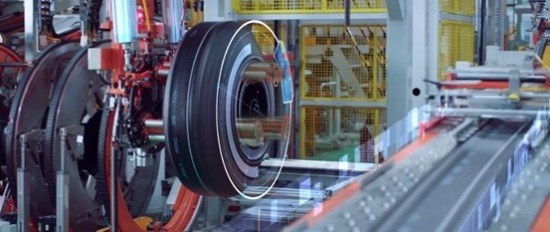Shandong relaxes restrictions on new high-end tyre projects
 Following the 17 August, the launch of the high-end tyre project will eliminate long-standing investment restrictions (Photo: Sailun)
Following the 17 August, the launch of the high-end tyre project will eliminate long-standing investment restrictions (Photo: Sailun)
On 17 August 2023, several government departments in Shandong Province, China jointly issued a notice relaxing regulations for establishing high-end tyre projects. A more detailed explanation is that some new tyre manufacturing projects will no longer need to eliminate the original production lines with the same energy consumption.
In the past few years, the Shandong provincial government has adopted more aggressive environmental protection and carbon emission policies, listing the tyre industry as high energy-consuming and conducting strict supervision. If local tyre companies want to build new manufacturing projects, they must eliminate the original production capacity with the same energy consumption. Affected by this, Shandong Province has rarely launched large-scale projects in recent years.
Following the 17 August, the launch of the high-end tyre project will eliminate the long-standing investment restrictions. Specifically, the high-end tyre project needs to meet the standards in seven aspects: investment volume, production capacity scale, product category, process equipment, energy efficiency level, environmental protection level and digitalisation level. It is worth noting that these standards are obligatory. In other words, tyre projects that do not meet the seven standards will not be approved regardless of whether they can replace the original backward production capacity.
Taking investment volume as an example, the investment in fixed assets (including investment in equipment and construction and installation) of new projects needs to be more than 100 million yuan. In terms of production capacity, new projects require an annual output of more than 3 million sets of all-steel radial tyres or 10 million semi-steel radial tyres. The capacity requirements for radial motorcycle tyres and OTR are 10 million and over 50,000 tons, respectively.
Unlike high-end projects, Shandong authorities have not relaxed their supervision of low-end and mid-end projects. Various departments of Shandong Province require that mid-end projects “…accelerate the improvement of energy efficiency, environmental protection, quality, and digitalisation for stock tyre projects”. The energy efficiency improvement plan must be completed by the end of April 2025.
As for low-end projects, the Shandong authorities demanded the acceleration of their phase-out. In the document, the regulatory authorities expressly specified the definition of low-end projects, that is, “projects whose capacity utilisation level has been lower than 20 per cent for two consecutive years since 2021; illegal projects that cannot be rectified; projects that are below the energy efficiency standard level and cannot be upgraded; projects that do not have energy efficiency data and cannot be accounted for”.
In addition, the document’s content shows that “mergers and reorganisations” will still be one of the priorities for developing the tyre industry in Shandong Province in the future.
Combined with recovering Chinese tyre export levels, especially those emanating from Shangdong Province, this could lead to increased tyre imports in the UK and European markets.

 RAKEZ
RAKEZ

Comments